
The 1960s, without a doubt, stand as a veritable golden era for automobile enthusiasts, a decade that truly reshaped the very landscape of automotive design, engineering, and cultural significance. It was a time of revolutionary designs and engineering marvels, leaving an indelible mark on history that continues to captivate hearts and minds today. The spirit of innovation and style of this period is beautifully embodied in the vehicles that roared off assembly lines, quickly becoming cherished icons.
From the sleek, sophisticated sports cars that graced European boulevards to the muscular powerhouses that dominated American highways, these automobiles were more than just modes of transportation. They were bold statements, symbols of freedom, technological prowess, and individual expression that truly captured the zeitgeist. This profound impact ensures their timeless allure, making them beloved collector’s items and admired pieces of history.
As we look back, a deep sense of nostalgia for these automotive titans permeates the enthusiast community. The industry’s pursuit of speed, power, and groundbreaking design converged to create some of the most exotic and recognizable cars ever conceived. Join us as we take a closer look at a selection of these unforgettable machines, exploring what made them so desirable and why they continue to inspire awe, celebrating the artistry and engineering of a truly remarkable decade.

1. **1961 Jaguar E-Type (XKE)**Enzo Ferrari, a man synonymous with automotive excellence, famously hailed the 1961 Jaguar E-Type as “the most beautiful car ever made.” This singular commendation from such a legendary figure immediately elevates the E-Type to an almost mythical status, reflecting a design philosophy that was both groundbreaking and breathtakingly elegant. Revealed in 1961, the E-Type possessed a grace and a visual allure that few other vehicles have ever come close to replicating, making it an instant global sensation.
The sheer beauty of the E-Type was not merely a stylistic flourish; it was a direct result of the meticulous aerodynamic shaping by Jaguar’s brilliant aerodynamicist, Malcolm Sayer. This blend of form following function resulted in a smooth, fluid silhouette that captivated the imagination of car enthusiasts worldwide. Its long bonnet, curvaceous fenders, and sleek fastback profile combined to create an aesthetic that remains timeless, embodying 1960s British motoring excellence.
Beyond its undeniable good looks, the Jaguar E-Type was also an engineering marvel, built on a race-oriented platform that was genuinely ahead of its time. It featured a smooth inline-six engine, which would later evolve to include a powerful V12, paired with advanced disc brakes, bringing race-car technology directly to the road. This formidable combination of speed and sophisticated handling garnered even more attention, proving to the automotive industry that such a high-performance, aesthetically stunning car could be made accessible to a broader audience.
What truly set the E-Type apart and contributed significantly to its widespread desirability was its remarkable affordability. Despite its exotic appearance and cutting-edge performance, the car was sold for only a fraction of the cost of other high-end sports cars of the era. This unprecedented value proposition, combining elegance, power, and accessibility, cemented its legacy as a beloved icon of automotive design and engineering, capturing countless hearts and solidifying its place in history.
Car Model Information: 1971 Jaguar E-Type Restomod
Sp: uk
Name: Jaguar E-Type
Caption: 1961 E-Type Series 1 3.8-Litre, the first production model of this open two-seater
Aka: Jaguar XK-E , Jaguar V-12
Manufacturer: Jaguar Cars
Production: 1961–1974
Class: Sports car
Predecessor: Jaguar XK150
Related: Jaguar D-Type,Jaguar XJ13
Successor: Jaguar XJS
Layout: FMR layout
Assembly: Coventry,England
Designer: Malcolm Sayer
Categories: 1970s cars, 2+2 coupés, All articles with dead external links, All articles with specifically marked weasel-worded phrases, All articles with unsourced statements
Summary: The Jaguar E-Type, or the Jaguar XK-E for the North American market, is a British front mid-engined sports car that was manufactured by Jaguar Cars Ltd from 1961 to 1974. Its sleek appearance, advanced technologies, high performance, and competitive pricing established it as an icon. The E-Type’s claimed 150 miles per hour (240 km/h) top speed, sub-7-second 0 to 60 mph (97 km/h) acceleration, largely unitary body construction, front and rear independent suspension with disc brakes, mounted inboard at the rear, and rack-and-pinion steering spurred industry-wide changes.
The E-Type was based on Jaguar’s D-Type racing car, which had won the 24 Hours of Le Mans for three consecutive years beginning in 1955.
The E-Type employed what was, for the early 1960s, a novel design principle, with a front subframe carrying the engine, front suspension and front bodywork bolted directly to the body tub. No ladder frame chassis, as was common at the time, was needed and as such the first cars weighed only 1,315 kg (2,899 lb).
It is rumored that, on its debut on 15 March 1961, Enzo Ferrari called it “the most beautiful car ever made”, but this statement is not fully confirmed. In 2004, Sports Car International magazine placed the E-Type at number one on their list of Top Sports Cars of the 1960s. In March 2008, the Jaguar E-Type ranked first in The Daily Telegraph’s online list of the world’s “100 most beautiful cars” of all time.
Get more information about: Jaguar E-Type
Buying a high-performing used car >>>
Brand: Jaguar Model: E-Type
Price: $64,900 Mileage: 2,455 mi.
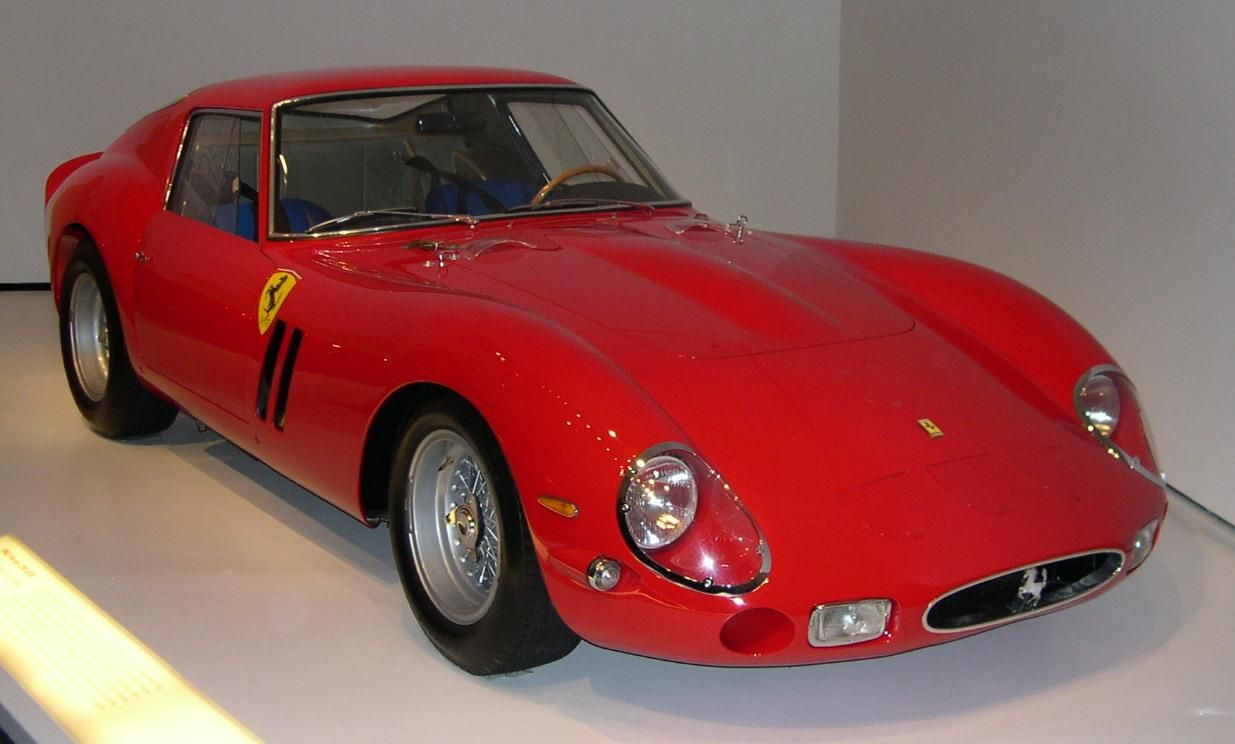
2. **1962 Ferrari 250 GTO**Standing as one of the most valuable and coveted cars on the planet, the 1962 Ferrari 250 GTO is an undisputed titan of automotive history. Its legend was forged on the racing circuits, where it utterly dominated its class, consistently achieving victory and proving Ferrari’s prowess in motorsports. This remarkable on-track success, however, is only one facet of its allure, as the 250 GTO also boasts an exquisite body that has been universally admired.
Upon its launch in 1962, the 250 GTO immediately transcended its status as a mere racing machine to become a true icon. Beyond its formidable performance, what truly captivated enthusiasts was its astonishing two-door Berlinetta body style. The insanely beautiful and curvy lines spoke of dreams realized, presenting a design that was both aggressive for racing and incredibly elegant for display, a rare blend that few cars achieve.
The design, characterized by its purposeful yet fluid aesthetic, reflects the pinnacle of 1960s Italian sports car artistry. Every curve and every vent served both an aerodynamic and an aesthetic purpose, creating a vehicle that was as efficient on the track as it was stunning to behold. This combination of performance and beauty continues to captivate collectors and enthusiasts, solidifying its reputation as a masterpiece of design.
Produced for only a short period between 1962 and 1964, its limited run has only amplified its legendary status and rarity. The stratospheric auction prices achieved by the 250 GTO have become legendary in their own right, reflecting its unparalleled status as an automotive icon. Its enduring legacy as a symbol of luxury, speed, and peerless design ensures its permanent place in the annals of automotive greatness.
Car Model Information: 2021 Volkswagen Tiguan 2.0T SE R-Line Black
Name: Ferrari 250 GTO
Caption: 1963 Ferrari 250 GTO (chassis 4153GT)
Manufacturer: Ferrari
Production: 1962–1964,(36 produced)
Designer: Giotto Bizzarrini,Scaglietti
Class: Sports car
BodyStyle: berlinetta
Related: Ferrari 330#330 LMB,Ferrari P#250 LM
Layout: FR layout
Engine: 2,953 cc,Ferrari Colombo engine#250,Overhead camshaft#Single Overhead camshatf,Weber carburetor,Compression ratio
Powerout: 300 PS
Abbr: on
Order: flip @ 5500 rpm
Transmission: Manual transmission
Wheelbase: 2400 mm
Length: 4325 mm
Width: 1600 mm
Height: 1210 mm
Weight: convert
Predecessor: Ferrari 250 GT SWB
Successor: Ferrari 250 LM,Ferrari 288 GTO
Categories: All articles lacking reliable references, All articles needing additional references, All articles with bare URLs for citations, All articles with unsourced statements, Articles lacking reliable references from March 2022
Summary: The Ferrari 250 GTO is a grand tourer produced by Ferrari from 1962 to 1964 for homologation into the FIA’s Group 3 Grand Touring Car category. It was powered by Ferrari’s Tipo 168/62 Colombo V12 engine. The “250” in its name denotes the displacement in cubic centimeters of each of its cylinders; “GTO” stands for Gran Turismo Omologato, Italian for “Grand Touring Homologated”.
Just 36 of the 250 GTOs were manufactured between 1962 and 1964. This includes 33 cars with 1962–63 bodywork (Series I) and three with 1964 (Series II) bodywork similar to the Ferrari 250 LM. Four of the older 1962–1963 (Series I) cars were updated in 1964 with Series II bodies.
When new, the 250 GTO cost $18,000 in the United States, with buyers personally approved by Enzo Ferrari and his dealer for North America, Luigi Chinetti. This model has since become highly desired by automobile collectors and sales have repeatedly set price records. The current record for world’s most expensive Ferrari was set in June 2018 when a 1963 250 GTO (chassis 4153GT) was sold in a private sale for $70 million.
In 2004, Sports Car International placed the 250 GTO eighth on their list of Top Sports Cars of the 1960s, and nominated it the top sports car of all time. Similarly, Motor Trend Classic placed the 250 GTO first on a list of the “Greatest Ferraris of All Time”. Popular Mechanics named it the “Hottest Car of All Time”.
Get more information about: Ferrari 250 GTO
Buying a high-performing used car >>>
Brand: Ferrari Model: 250 GTO
Price: $16,773 Mileage: 68,625 mi.
Read more about: Driving Through History: 10 Stylish and Iconic Cars That Defined the Electrifying 1960s Automotive Landscape

3. **1966 Lamborghini Miura**The 1966 Lamborghini Miura is widely heralded as the first true “supercar,” a machine that completely redefined exotic performance and styling for generations to come. With its debut, the automotive world witnessed a seismic shift in what was considered possible for a road-going vehicle. It left a rich heritage behind, cherished today by countless people all over the world, cementing its place on par with legends like the Ferrari 250 GTO and the Jaguar E-Type.
Marcello Gandini’s dramatic design for the Miura was nothing short of revolutionary, featuring a captivating silhouette that commanded attention from every angle. This stunning beauty was matched by jaw-dropping performance, powered by a formidable 3.9-liter V12 engine. Crucially, this engine was positioned behind the driver in a groundbreaking mid-engine configuration, a layout that set a new standard for sports cars and became a hallmark of high-performance vehicles.
The Miura’s innovative design and engineering placed it among the fastest production cars of its era, marking it as the progenitor of the supercars we know today. Its sleek lines, low profile, and unmistakable stance contributed to an aesthetic that continues to inspire designers and enthusiasts alike. This bold departure from traditional grand tourer layouts solidified Lamborghini’s reputation for daring innovation and uncompromising style.
As a classic, the Miura remains a vibrant symbol of 1960s Italian automotive artistry, celebrated for its unique blend of innovation and elegance. It was a vehicle that wasn’t just driven; it was experienced, carving a path on the world’s most scenic roads with unmatched presence and exhilaration. Its profound impact on the automotive industry is undeniable, ensuring its status as an eternal benchmark for exotic performance.
Read more about: Unleashing the Legends: The 15 Most Valuable 1970s Cars Commanding Top Dollar Today

4. **1963 Chevrolet Corvette Sting Ray (Split-Window)**A defining moment for the American car scene of the 1960s was the introduction of the second generation Chevrolet Corvette, the C2 Sting Ray, in 1963. This particular iteration, especially the iconic split-window coupe design, stands among the most recognizable Corvettes ever produced, instantly captivating enthusiasts with its aggressive yet refined styling. Its debut marked a significant leap forward for the American sports car.
The Sting Ray’s innovative fiberglass body and independent rear suspension signaled a tech-savvy future, showcasing Chevrolet’s commitment to pushing performance boundaries. This was a bold move that not only enhanced the car’s handling dynamics but also projected a modern, forward-thinking image. The combination of cutting-edge design and exhilarating performance made it an absolute standout in the automotive world of its time.
Powered by a roaring American V8 engine, the 1963 Corvette Sting Ray could effortlessly challenge not only its domestic competitors but also the best European sports cars of the era, giving them a serious “run for their money.” This potent blend of raw power and sophisticated engineering offered a driving experience that was both thrilling and surprisingly refined, appealing to a wide range of discerning drivers.
The Sting Ray’s enduring legacy as a classic is celebrated by collectors and enthusiasts who admire its innovation and distinctive style. As a symbol of 1960s American automotive creativity, the Split-Window Sting Ray continues to captivate with its timeless appeal and engineering excellence, maintaining its status as a highly sought-after piece of motoring history.
Car Model Information: 2021 Volkswagen Tiguan 2.0T SE R-Line Black
Name: Chevrolet Corvette (C2)
Caption: 1963 Chevrolet Corvette Sport Coupe
Manufacturer: Chevrolet
Aka: Chevrolet Corvette Sting Ray
Production: August 1962–July 1967
ModelYears: 1963–1967
Platform: Series 0800 (1962-1964),Series 194 (1965-1967)
Chassis: Body-on-frame
Assembly: St. Louis, Missouri
Predecessor: Chevrolet Corvette (C1)
Successor: Chevrolet Corvette (C3)
Class: Sports car
BodyStyle: Convertible (car),coupé
Layout: Front-engine, rear-wheel-drive layout
Engine: {{cvt,327,cuin,L,1,Chevrolet small-block engine#327,V8 engine
Wheelbase: cvt
Length: cvt
Width: cvt
Height: cvt
Weight: cvt
Transmission: manual transmission,manual transmission,Powerglide
Related: Bill Thomas Cheetah
Designer: Larry Shinoda
Categories: 1960s cars, All articles needing additional references, All articles with specifically marked weasel-worded phrases, All articles with unsourced statements, Articles needing additional references from July 2024
Summary: The Chevrolet Corvette (C2) is the second-generation Corvette sports car, produced by the Chevrolet division of General Motors (GM) for the 1963 through 1967 model years.
Get more information about: Chevrolet Corvette (C2)
Buying a high-performing used car >>>
Brand: Chevrolet Model: Corvette Sting Ray
Price: $16,773 Mileage: 68,625 mi.
Read more about: Pure Automotive Gold: 14 Masterpiece Cars from the 1960s That Still Reign Supreme

5. **1965 Ford Mustang (1st Generation)**Introduced mid-1964, the first-generation 1965 Ford Mustang was an automotive phenomenon that sparked an entirely new category: the “pony car” craze. It took the world by storm with its irresistible allure and undeniable raw power, becoming an instant hit and a cornerstone of American car culture. The Mustang was undoubtedly the American muscle car everybody thought about, and wanted, when the term emerged.
Its sporty looks, compact size, and massive customization options made it immensely popular, particularly among younger buyers. The Mustang’s accessibility and engaging performance appealed to a wide audience, ensuring its place as a beloved classic. Initially, some iterations came with unremarkable engines, but the subsequent variants quickly introduced the iconic V8 powerplants that would truly propel the Mustang to the legendary status it commands today.
The design of the 1965 Mustang was a masterstroke, combining sleek lines with an aggressive stance that hinted at its underlying power. It offered various body styles, including the fastback, hardtop coupe, and convertible, catering to diverse tastes while maintaining its distinct identity. This versatility, coupled with its performance capabilities, cemented its appeal and established a blueprint for future pony cars.
The car received several redesigns throughout the 1960s and into the next decade, yet it consistently retained the intimidating and charismatic look of the original. Its enduring popularity and profound influence on car design continue to be celebrated by enthusiasts and collectors worldwide. The Mustang’s legacy as a symbol of 1960s American automotive innovation is marked by its style, versatility, and lasting impact on the industry, with a million units gobbled up by young people in its early years.
Car Model Information: 2024 Ford Mustang GT Premium
Name: Ford Mustang
Caption: 2024 Ford Mustang GT
Aka: Ford T5 (Germany)
Manufacturer: Ford Motor Company
Production: March 1964 – present
ModelYears: 1965–present
Class: Unbulleted list
BodyStyle: Unbulleted list
Layout: Front-engine, rear-wheel-drive layout
Categories: 1970s cars, 1980s cars, 1990s cars, 2+2 coupés, 2000s cars
Summary: The Ford Mustang is an American automobiles manufactured and marketed by Ford since 1964, as Ford’s longest nameplate in continuous production. Currently in its seventh generation, it is the fifth-best selling Ford car nameplate. The namesake of the “pony car” automobile segment, the Mustang was developed as a highly styled line of sporty coupes and convertibles derived from existing model lines, initially distinguished by its pronounced “long hood, short deck” proportions.
Originally predicted to sell 100,000 vehicles yearly, the 1965 Mustang became the most successful vehicle launch since the 1927 Model A. Introduced on April 17, 1964 (16 days after the Plymouth Barracuda), over 400,000 units were sold in its first year; the one-millionth Mustang was sold within two years of its launch. In August 2018, Ford produced the 10-millionth Mustang; matching the first 1965 Mustang, the vehicle was a 2019 Wimbledon White convertible with a V8 engine.
The success of the Mustang launch led to multiple competitors from other American manufacturers, including the Chevrolet Camaro and Pontiac Firebird (1967), AMC Javelin (1968), and Dodge Challenger (1970). It also competed with the Plymouth Barracuda, which was launched around the same time. The Mustang also had an effect on designs of coupes worldwide, leading to the marketing of the Toyota Celica and Ford Capri in the United States (the latter, by Lincoln-Mercury). The Mercury Cougar was launched in 1967 as a unique-bodied higher-trim alternative to the Mustang; during the 1970s, it included more features and was marketed as a personal luxury car.
From 1965 until 2004, the Mustang shared chassis commonality with other Ford model lines, staying rear-wheel-drive throughout its production. From 1965 to 1973, the Mustang was derived from the 1960 Ford Falcon compact. From 1974 until 1978, the Mustang (denoted Mustang II) was a longer-wheelbase version of the Ford Pinto. From 1979 until 2004, the Mustang shared its Fox platform chassis with 14 other Ford vehicles (becoming the final one to use the Fox architecture). Since 2005, Ford has produced two generations of the Mustang, each using a distinct platform unique to the model line.
Through its production, multiple nameplates have been associated with the Ford Mustang series, including GT, Mach 1, Boss 302/429, Cobra (separate from Shelby Cobra), and Bullitt, along with “5.0” fender badging (denoting 4.9 L OHV or 5.0 L DOHC V8 engines).
Get more information about: Ford Mustang
Buying a high-performing used car >>>
Brand: Ford Model: Mustang
Price: $44,777 Mileage: 19,565 mi.
Read more about: The Enduring Magnetism of 1960s American Iron: A Deep Dive into the Decade’s Automotive Icons
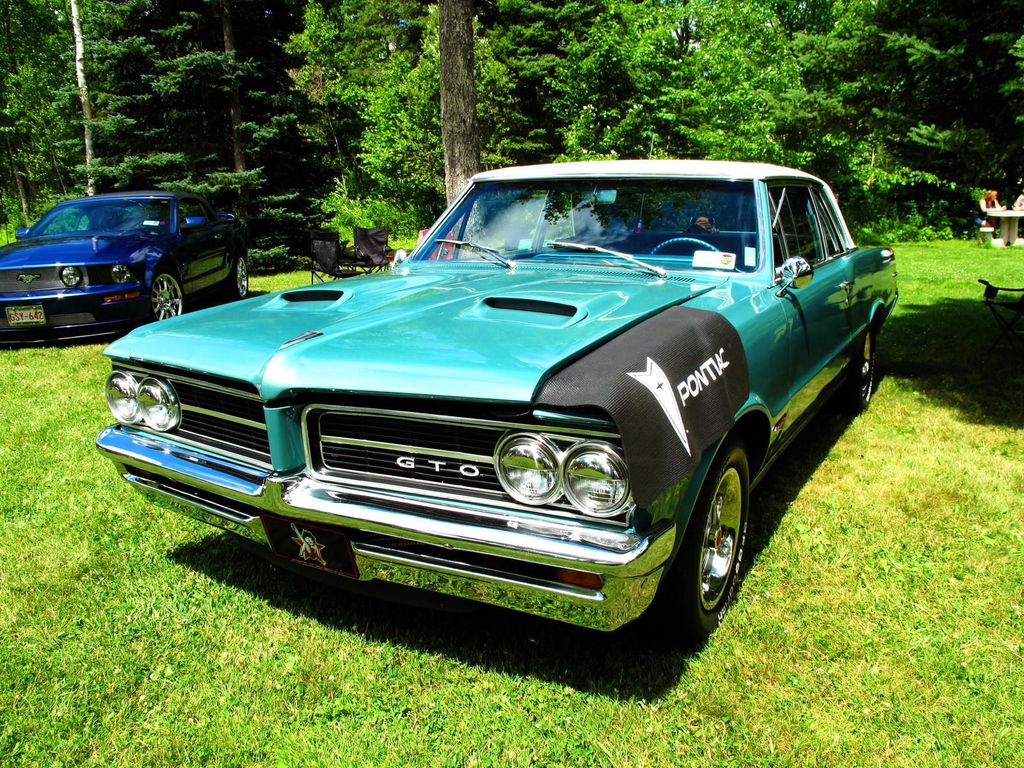
6. **1964 Pontiac GTO**Often credited with single-handedly kicking off the muscle-car era, the 1964 Pontiac GTO revolutionized performance automobiles. This iconic vehicle achieved its groundbreaking status by bravely stuffing a powerful big V8 engine into a mid-size body, a concept that was relatively daring for its time. While it may not have been the absolute first car with such an engine, it was unequivocally the one that set everyone else on fire, igniting a fierce competition among American car manufacturers.
This affordable performance icon quickly captured the imagination of enthusiasts across the nation. Its potent blend of power and distinctive styling set a new, electrifying standard for muscle cars, making it an indispensable cornerstone of 1960s American car culture. The GTO was known for delivering exhilarating performance without carrying an exorbitant price tag, thereby making high-horsepower excitement accessible to a broader market.
The GTO’s design, characterized by its bold presence and confident lines, perfectly embodied the spirit of the era’s pursuit of speed and power. Its initial offering came with a 220 horsepower V8, which by 1966 had escalated to a robust 350 horsepower, showcasing its rapid evolution and commitment to performance. This progression only fueled its popularity and desirability among those seeking thrilling driving experiences.
The legacy of the GTO as a classic is profoundly cherished by collectors who appreciate its pivotal role in automotive history. Produced between 1964 and 1974, it firmly established the blueprint for what a muscle car should be. Its embodiment of the era’s horsepower race ensures its enduring status as a revered icon, a testament to Pontiac’s vision and engineering prowess in shaping a defining segment of the American automotive landscape.
Car Model Information: 1966 Pontiac GTO Coupe
Name: Pontiac GTO
Caption: 2005 Pontiac GTO
Manufacturer: Pontiac (automobile),Holden
Class: Mid-size car,Compact car,Mid-size car
Production: 1963–1974,2003–2006
Predecessor: Pontiac Tempest
Layout: Front-engine, rear-wheel-drive layout
ModelYears: 1964-1974 2004-2006
Categories: 1970s cars, 2000s cars, All articles with unsourced statements, Articles with short description, Articles with unsourced statements from October 2008
Summary: The Pontiac GTO is a front-engine, rear-drive, two-door, and four-passenger automobile manufactured and marketed by the Pontiac division of General Motors over four generations from 1963 until 1974 in the United States — with a fifth generation made by GM’s Australian subsidiary, Holden, for the 2004 through 2006 model years.
The first generation of the GTO is credited with popularizing the muscle car market segment in the 1960s. Some consider the Pontiac GTO to have started the trend with all four domestic automakers offering a variety of competing models.
For the 1964 and 1965 model years, the GTO was an optional package on the intermediate-sized Pontiac LeMans. The 1964 GTO vehicle identification number (VIN) started with 22, while the 1965 GTO VIN began with 237. The GTO was designated as a separate Pontiac model from 1966 through 1971 (VIN 242…). It became an optional package again for the 1972 and 1973 intermediate LeMans. For 1974, the GTO was an optional trim package on the compact-sized Ventura.
The GTO model was revived for the 2004 through 2006 model years as a captive import for Pontiac, a left-hand drive version of the Holden Monaro, itself a coupé variant of the Holden Commodore.
Get more information about: Pontiac GTO
Buying a high-performing used car >>>
Brand: Pontiac Model: GTO
Price: $59,991 Mileage: 4,408 mi.
Read more about: Detroit’s Golden Age: 12 Classic American Cars That Ruled the Roads and Made a Nation Proud
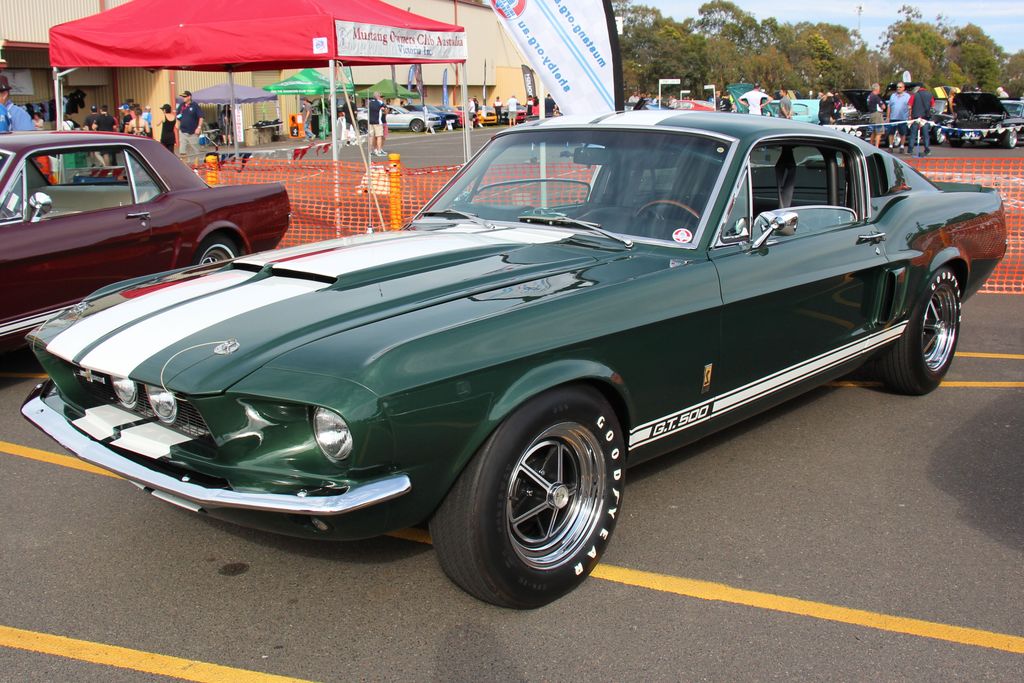
7. **1967 Shelby GT500**Carroll Shelby, a name synonymous with high-performance Ford vehicles, took the original Mustang concept and masterfully injected it with serious performance DNA, resulting in the legendary 1967 Shelby GT500. This machine was not just an evolution; it was a transformation, featuring a formidable 428 Police Interceptor engine nestled under its hood. Combined with timeless fastback styling, the GT500 unequivocally represents the pinnacle of 1960s pony-car excitement.
The GT500’s blend of raw power and aggressive styling made it an instant classic upon its release, capturing the imagination of car enthusiasts across the globe. It epitomized the American ideal of muscle, marrying brute force with an undeniably cool aesthetic. This car was designed for those who demanded superior performance without sacrificing an inch of style, making it a dream machine for many.
Under the guidance of Shelby American, the GT500 received numerous upgrades and refinements, pushing its capabilities ever further. Its presence on the road was commanding, and its performance was truly exhilarating, solidifying its reputation as a formidable force among its peers. The meticulous engineering and design work ensured that every aspect of the GT500 contributed to its high-performance persona.
The GT500’s legacy as a symbol of American muscle continues to be celebrated by collectors and admirers, decades after its debut. Its enduring appeal and exceptional performance capabilities ensure its place as a beloved icon of automotive history, admired for its boldness, innovative engineering, and the sheer thrill it delivered. This vehicle truly embodies the spirit of a golden era where horsepower reigned supreme and design pushed boundaries.
Continuing our journey through the indelible classic cars of the 1960s, we now turn our attention to seven more remarkable machines that captivated enthusiasts and shaped the automotive landscape for generations. This diverse array of vehicles includes everything from iconic muscle machines and elegant sports cars to influential luxury vehicles, each contributing its unique legacy to the golden age of motoring.
Read more about: Ignite Your Passion: 15 Iconic Cars That Still Dominate Men’s Automotive Dreams and Inspire Unforgettable Drives

8. **1966 Volvo P1800**The 1960s was a decade showcasing diverse automotive excellence, and from Sweden emerged a contender blending style with unwavering reliability: the 1966 Volvo P1800. This timeless sports-coupé styling quickly garnered international renown, not just for its inherent good looks but also its distinguished public presence. It elegantly defied the common perception that Volvo vehicles were solely about practicality, proving the marque could deliver genuine aesthetic appeal and a pleasing driving experience.
Its celebrity status was unequivocally cemented when it became the cherished ride of Roger Moore’s character in the immensely popular television series ‘The Saint’. This prime-time exposure transformed the P1800 into a global icon, associating it with sophistication, adventure, and an understated coolness that resonated with audiences worldwide. The car’s consistent, flawless performance on screen mirrored its real-world dependability, building an ironclad reputation for robust engineering among the motoring public.
Beyond its silver screen fame, the P1800 was celebrated for a unique combination of attributes. Its elegant lines, characterized by a long hood, prominent grille, and a sleek, flowing roofline culminating in subtle fins, presented a distinctly European aesthetic. This visual appeal was underpinned by the robust build quality and meticulous attention to detail, hallmarks of Swedish craftsmanship. The P1800’s blend of aesthetic appeal and engineering prowess truly captured the essence of 1960s automotive innovation, appealing to a discerning clientele.
This blend of sophisticated design and unwavering durability contributed significantly to its enduring appeal as a beloved collector’s item today. Enthusiasts appreciate its striking appearance, remarkable longevity, and ease of maintenance—qualities highly sought after in classic vehicles. The P1800’s ability to maintain its allure decades after its production highlights its exceptional engineering and timeless design, making it a cherished piece of automotive history that continues to impress car enthusiasts around the world.
Car Model Information: 1961 Volvo P1800
Name: Volvo P1800
Caption: 1965 Volvo 1800S
Designer: Pelle Petterson
Manufacturer: Volvo Cars
Assembly: West Bromwich,Torslanda,Gothenburg,Arica
Production: 1961–1973,coupé: 39,407,sports estate: 8,077
Layout: Front-engine, rear-wheel-drive layout
Transmission: Volvo M40 transmission,Overdrive_(mechanics)#In_Europe,Borg-Warner 35 transmission
Length: convert
Width: 1700 mm
Abbr: on
Height: convert
Weight: convert
Wheelbase: 2450 mm
Related: Volvo Amazon
Engine: Volvo B18 engine#B18,Volvo B18 engine#B20
Class: Sports car
BodyStyle: coupe,shooting brake
Predecessor: Volvo P1900
Categories: 1970s cars, All articles needing additional references, All articles with dead external links, All articles with unsourced statements, Articles needing additional references from March 2018
Summary: The Volvo P1800 (pronounced eighteen-hundred) is a 2+2, front-engine, rear-drive sports car manufactured and marketed by Volvo Cars between 1961 and 1973. Originally a coupé (1961–1972), it was also offered in a shooting brake configuration toward the end of its production (1972–1973). Styling was by Pelle Petterson under the tutelage of Pietro Frua when Frua’s studio was a subsidiary of the Italian carrozzeria Ghia, and the mechanicals were derived from Volvo’s Amazon/122 series.
Marketed as a touring car rather than a sports car, the P1800 became widely known when driven by British actor Roger Moore in the television series The Saint, which aired from 1962 to 1969.
In 1998, an 1800S owned by Irv Gordon (1940–2018) was certified as the highest mileage private vehicle driven by the original owner in non-commercial service—having exceeded 3.25 million miles (over 5.23 million km) as of his death in 2018.
Get more information about: Volvo P1800
Buying a high-performing used car >>>
Brand: Volvo Model: P1800
Price: $114,000 Mileage: 937 mi.
Read more about: The Million-Mile Masters: Unpacking the Engineering Secrets of 10 Automotive Brands That Defy Obsolescence
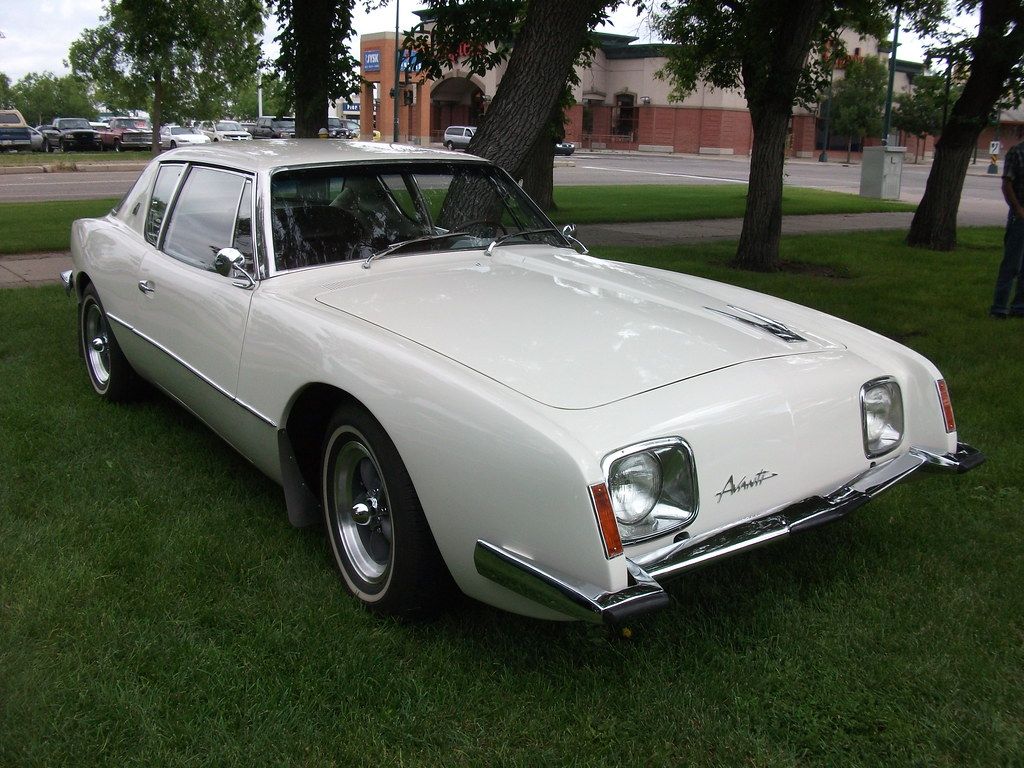
9. **1964 Studebaker Avanti**In an era dominated by conventional American design, the 1964 Studebaker Avanti stood out as a truly bold departure. It dared to be different, challenging the status quo with a striking fiberglass body unlike anything else on the road, rejecting the chrome and fins of its contemporaries. This audacious design was the brainchild of the legendary Raymond Loewy, bringing a distinctive, futuristic aesthetic to Studebaker’s lineup and pushing conceptual boundaries.
The Avanti’s creation was a testament to Studebaker’s innovative spirit, born from a desire to create a halo car to invigorate the brand, even amidst challenging financial times. Despite economic headwinds, the marque embraced progressive design and engineering. Its distinctive shape, characterized by its unique “bottom-breather” front end without a traditional grille, its pillarless greenhouse, and asymmetrical dash, made it instantly recognizable as advanced American styling.
Performance was another key component of the Avanti’s appeal, proving it was more than just a design exercise. Its revolutionary exterior was matched by formidable capability on the road, particularly with its supercharged variants. These power-packed versions delivered an exhilarating driving experience, capable of impressive speeds and solid handling. This combination of avant-garde styling and robust power ensured its place as a unique offering in the competitive American automotive landscape, showcasing Studebaker’s ambition.
Today, the Avanti remains a deeply cherished favorite among collectors, who value its uniqueness, historical significance, and audacious design. Its rarity, due to its limited production run, only adds to its mystique and desirability. As a symbol of boundless creativity and daring during a pivotal decade, the 1964 Studebaker Avanti continues to captivate car aficionados worldwide, representing a chapter where American automotive design truly pushed stylistic boundaries.
Car Model Information: 1964 Studebaker Avanti
Name: Studebaker Avanti
Caption: 1963 Studebaker Avanti
Manufacturer: Studebaker
Aka: Avanti
Production: 1962: 1,200;
Assembly: Studebaker Corporation#Studebaker Factories,South Bend, Indiana
Predecessor: Studebaker Gran Turismo Hawk
Class: Personal luxury car
BodyStyle: coupe
Layout: FR layout
Engine: 289 CID
Abbr: on
Transmission: Manual transmission
Wheelbase: 109 in
Length: 192.4 in
Width: 70.3 in
Height: 53.8 in
Weight: 3095 lb
Related: Studebaker Lark
Designer: Raymond Loewy#Avanti
Categories: All articles with incomplete citations, Articles with incomplete citations from September 2018, Articles with short description, CS1 errors: missing title, Cars discontinued in 1963
Summary: The Studebaker Avanti is a personal luxury coupe manufactured and marketed by Studebaker Corporation between June 1962 and December 1963. A halo car for the maker, it was marketed as “America’s only four-passenger high-performance personal car.”
Described as “one of the more significant milestones of the postwar industry”, the Raymond Loewy-designed car offered safety features and high-speed performance. Called “the fastest production car in the world” upon its introduction, a modified Avanti reached over 170 mph (270 km/h) with its supercharged 289-cubic-inch (4,740 cm3) R3 engine at the Bonneville Salt Flats. In all, it broke 29 world speed records at the Bonneville Salt Flats.
Following Studebaker’s discontinuation of the model, a succession of five ventures manufactured and marketed derivatives of the Avanti model through 2006. These ventures licensed intellectual property and, in some cases procured parts, through arrangements with the successors to the Studebaker assets.
Get more information about: Studebaker Avanti
Buying a high-performing used car >>>
Brand: Studebaker Model: Avanti
Price: $57,000 Mileage: 45,354 mi.
Read more about: Unleashing the Beasts of ’62: A Deep Dive into 8 Legendary American Muscle Car Grandfathers
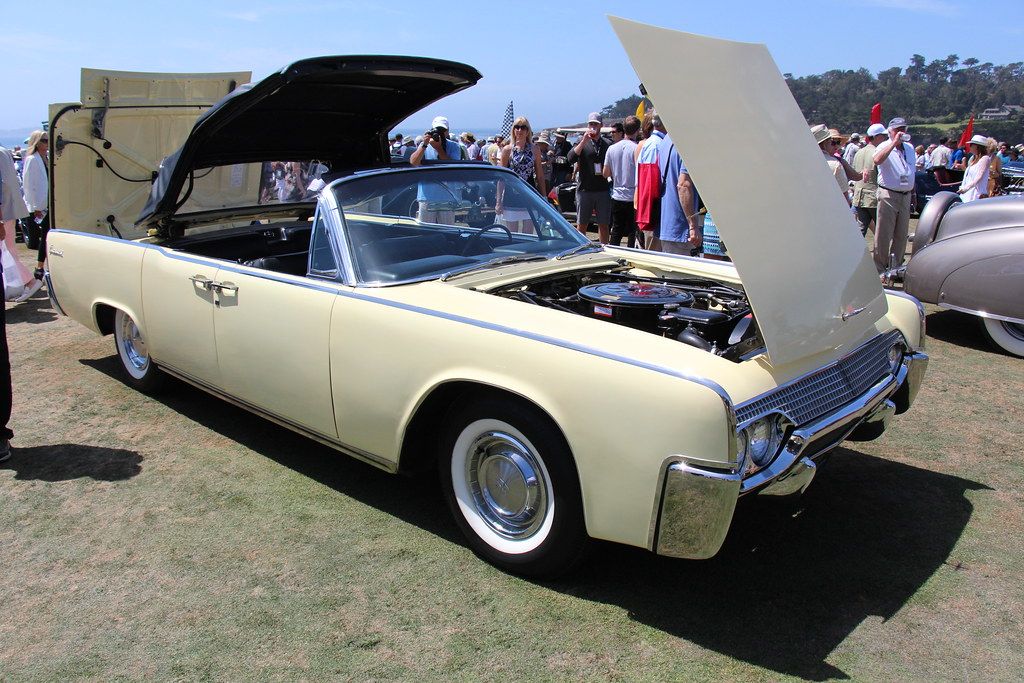
10. **1961 Lincoln Continental**The 1961 Lincoln Continental epitomized a new benchmark for American luxury, ushering in an era of understated elegance and sophisticated design. It presented a dramatic shift from the flamboyant, fin-laden styling of the previous decade, opting instead for clean, slab-sided lines and an air of dignified prestige that exuded quiet confidence. This flagship sedan immediately set a new design language for luxury automobiles, proving profoundly influential on subsequent generations of high-end vehicles.
One of its most distinctive and enduring features was its iconic ‘suicide doors’ for the rear passengers, which hinged at the back. This design element provided unparalleled ease of entry and exit, enhancing the car’s sense of grandeur and practicality, especially for individuals of stature. The Continental’s deliberate move towards a more restrained yet commanding presence resonated deeply with discerning buyers, redefining what a luxury car should look and feel like in the burgeoning 1960s.
Inside, the Continental’s elegance and sophistication were meticulously matched by its remarkably spacious interior and an exceptionally smooth, quiet ride, a testament to its robust body-on-frame construction and refined suspension. Every detail, from the quality of the premium materials like fine leather and real wood accents, to the precise fit and finish, spoke volumes about Lincoln’s unwavering commitment to luxury. This was a vehicle designed to transport occupants in supreme comfort and style, a true mobile sanctuary of opulence.
It quickly became the preferred choice for dignitaries, celebrities, and those who sought the very pinnacle of automotive refinement, serving as a symbol of power and influence. The car’s undeniable prestige and opulent charm made it a true icon of its era, representing a pinnacle of taste and societal status. Its connection to high-profile figures and momentous events only amplified its legendary status, ensuring the enduring celebration of its design genius and making it a highly sought-after piece for collectors.
Car Model Information: 2018 Lincoln Continental Reserve
Name: Lincoln Continental
Caption: 2019 Lincoln Continental
Manufacturer: Lincoln Motor Company
Production: 1939–1942,1946–1948,1956–2002,2016–2020
ModelYears: 1940–1942,1946–1948,1958–1980,1982–2002,2017–2020
Class: Full-size car,luxury car
Layout: Longitudinal engine,Front-engine, rear-wheel-drive layout
Categories: 1930s cars, 1940s cars, 1950s cars, 1960s cars, 1970s cars
Summary: The Lincoln Continental is a series of mid-sized and full-sized luxury cars produced between 1939 and 2020 by Lincoln, a division of the American automaker Ford. The model line was introduced following the construction of a personal vehicle for Edsel Ford, who commissioned a coachbuilt 1939 Lincoln-Zephyr convertible, developed as a vacation vehicle to attract potential Lincoln buyers. In what would give the model line its name, the exterior was designed with European “continental” styling elements, including a rear-mounted spare tire.
In production for over 55 years across nine different decades, Lincoln has produced ten generations of the Continental. Within the Lincoln model line, the Continental has served several roles ranging from its flagship to its base-trim sedan. From 1961 to 1976, Lincoln sold the Continental as its exclusive model line. The model line has also gone on hiatus three times. From 1949 to 1955, the nameplate was briefly retired. In 1981, the Continental was renamed the Lincoln Town Car to accommodate the 1982 seventh-generation Continental. After 2002, the Continental was retired, largely replaced by the Lincoln MKS in 2009; in 2017, the tenth-generation Continental replaced the MKS.
As part of its entry into full-scale production, the first-generation Continental was the progenitor of an entirely new automotive segment, the personal luxury car. Following World War II, the segment evolved into coupes and convertibles larger than sports cars and grand touring cars with an emphasis on features, styling, and comfort over performance and handling. From 1956 to 1957, the Continental nameplate was the namesake of the short-lived Continental Division, marketing the 1956–1957 Continental Mark II as the worldwide flagship of Ford Motor Company; as a second successor, Ford introduced the Continental Mark series in 1969, produced over six generations to 1998.
Along with the creation of the personal luxury car segment, the Lincoln Continental marked the zenith of several designs in American automotive history. The Continental is the final American vehicle line with a factory-produced V12 engine (1948), the final four-door convertible (1967), and the final model line to undergo downsizing (for the 1980 model year).
American production of the Continental and MKZ, its only two sedans, ended in 2020 thereby making Lincoln a crossover/SUV-only brand in the US.
Get more information about: Lincoln Continental
Buying a high-performing used car >>>
Brand: Lincoln Model: Continental
Price: $22,523 Mileage: 86,549 mi.
Read more about: Beyond the Chrome: Unearthing 12 of the Rarest Hidden Gems of 1950s American Automotive History
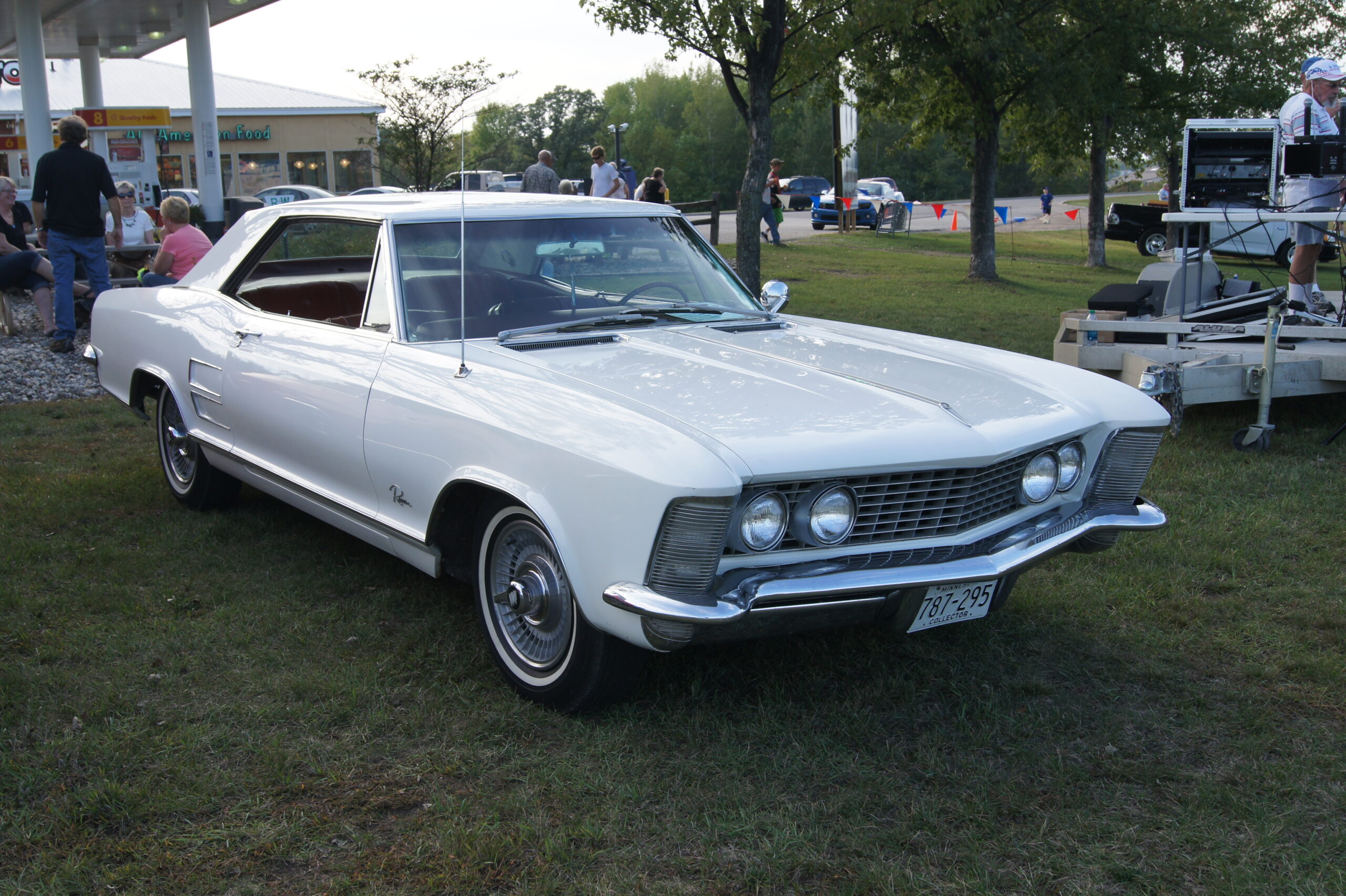
11. **1963 Buick Riviera**The 1963 Buick Riviera masterfully carved out its own niche, expertly combining personal luxury elegance with muscle-car strength. Its sleek, sharp ‘coke-bottle’ lines created a distinctive silhouette, boasting a European-inspired grace with American brawn. This was a car for those who appreciated sophisticated styling and a comfortable, upscale ride without compromising on the thrill of robust performance, a truly unique offering from Buick.
While the distinctive clam-shell headlights that became a signature feature were introduced slightly later, the initial 1963 model already exuded a powerful presence, characterized by its clean, sculpted front fascia and elegant grille. Underneath its luxurious skin, the Riviera housed a robust V8 engine, delivering ample power and torque that could easily challenge many dedicated sports cars of the era. This potent blend of performance and sophisticated styling ensured the Riviera was an instant standout.
The interior of the Riviera was just as captivating, designed to immerse occupants in an environment of refined comfort and understated luxury. Plush bucket seating, elegant instrumentation, and thoughtful details like the full-length center console contributed to an upscale driving experience that continued to charm enthusiasts. The car’s powerful presence on the road, combined with its opulent cabin, created a driving sensation that was both thrilling and exceptionally comfortable.
As a classic car, the 1963 Buick Riviera vividly reflects the era’s fascinating dichotomy: a deep desire for both unadulterated power and sophisticated grace. Its lasting impact on design, particularly its influence on the personal luxury segment, and its continued appreciation by collectors solidify its place as an indelible part of automotive history. The Riviera’s ability to flawlessly marry these two seemingly disparate characteristics is a testament to Buick’s visionary design.
Car Model Information: 1971 Buick Riviera
Caption: 1963 Buick Riviera
Name: Buick Riviera
Predecessor: Buick Super
Manufacturer: Buick
ModelYears: 1963–1993,1995–1999
Class: Personal luxury car
Categories: 1960s cars, 1970s cars, 1980s cars, 1990s cars, All articles with specifically marked weasel-worded phrases
Summary: The Buick Riviera is a personal luxury car that was marketed by Buick from 1963 to 1999, with the exception of the 1994 model year.
As General Motors’ first entry into the personal luxury car market segment, the Riviera was highly praised by automotive journalists upon its high-profile debut. It was a ground-up design on a new GM E platform debuting for the 1963 model year and was also Buick’s first unique Riviera model.
Unlike its subsequent GM E platform stablemates, the Oldsmobile Toronado and Cadillac Eldorado, the Riviera was initially a front engine/rear-wheel drive platform, switching to front-wheel drive starting with the 1979 model year.
While the early models stayed close to their original form, eight subsequent generations varied substantially in size and styling. A total of 1,127,261 Rivieras were produced.
The Riviera name was resurrected for two concept cars that were displayed at auto shows in 2007 and in 2013.
Get more information about: Buick Riviera
Buying a high-performing used car >>>
Brand: Buick Model: Riviera
Price: $22,499 Mileage: 91,150 mi.
Read more about: Beyond the Boomer Icons: Why Millennials Are Steering Clear of These Classic Cars and Reshaping the Collector Market
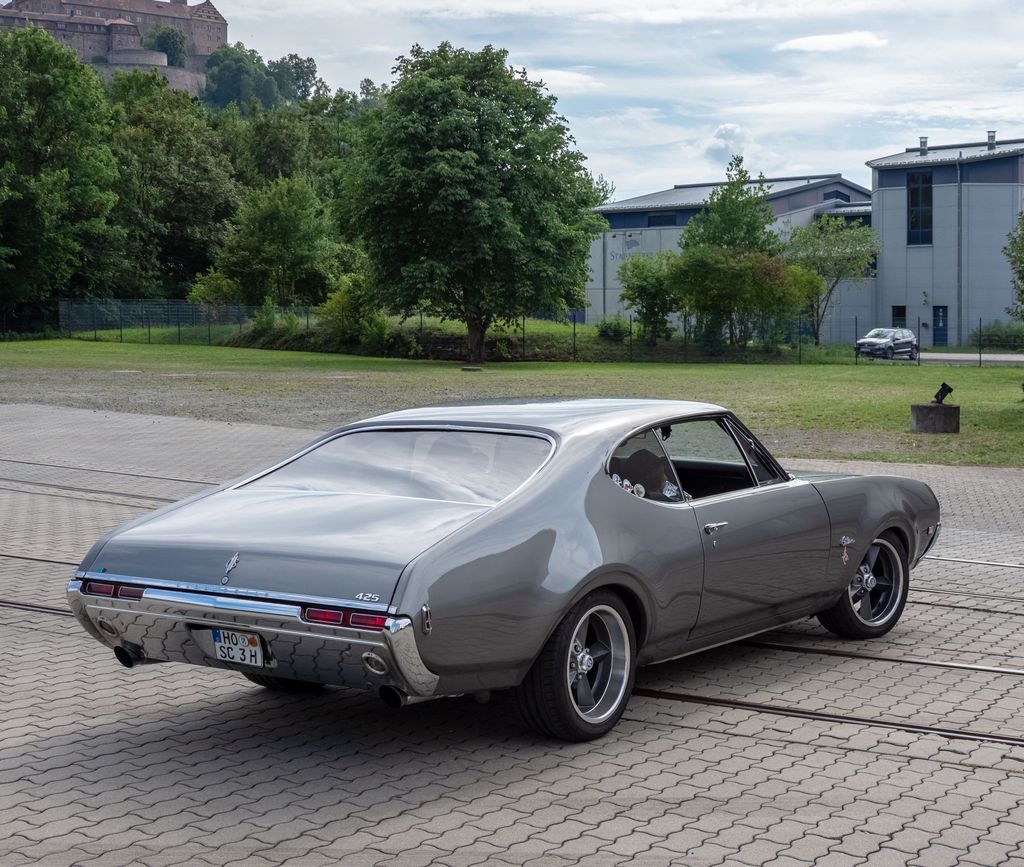
12. **1968 Oldsmobile 442**In the heart of the burgeoning muscle-car craze, Oldsmobile delivered a formidable response blending raw power with sophistication: the 1968 Oldsmobile 442. This iconic machine earned its numerical designation from its classic performance configuration: a four-barrel carburetor, a four-speed manual transmission, and a dual exhaust system. It was engineered not just to compete, but to truly dominate, establishing Oldsmobile as a serious player in the high-performance market.
The 442 was often regarded as a “sleeper” car, capable of surprising many with its immense power hidden beneath a more refined, less outwardly aggressive styling than some rivals. It delivered formidable big-block torque, providing exhilarating acceleration and a thrilling driving experience that appealed to those desiring uncompromising power with understated elegance. This unique blend made it a highly desirable choice among enthusiasts seeking robust performance with poise.
Its robust performance capabilities, combined with a sleek and well-proportioned design, quickly propelled the 442 to become a perennial favorite among muscle car enthusiasts. The attention to detail in its engineering, from the precise gear changes of its four-speed transmission to the resonant, authoritative roar of its dual exhaust, contributed to a deeply satisfying driving experience. It was a testament to Oldsmobile’s commitment to delivering both excitement and high build quality.
The 1968 Oldsmobile 442 profoundly embodies the dynamic spirit of the 1960s automotive revolution. It stands as a powerful testament to the era’s relentless pursuit of speed, innovation, and distinctive car design, showcasing how a traditional brand could expertly adapt to youth market demands. Its enduring legacy ensures its continued admiration by collectors, who appreciate its potent combination of brawn, beauty, and pivotal role in defining a golden age of American horsepower.
Car Model Information: 1969 Oldsmobile 442
Name: Oldsmobile 442
Manufacturer: Oldsmobile
ModelYears: 1964–1980,1985–1987,1990–1991
Class: Muscle car
Layout: FR layout
Caption: 1971 Oldsmobile 442
Categories: 1960s cars, 1970s cars, 1980s cars, All articles with unsourced statements, Articles with short description
Summary: The Oldsmobile 4-4-2 is a muscle car produced by Oldsmobile between the 1964 and 1987 model years. Introduced as an option package for US-sold F-85 and Cutlass models, it became a model in its own right from 1968 to 1971, spawned the Hurst/Olds in 1968, then reverted to an option through the mid-1970s. The name was revived in the 1980s on the rear-wheel drive Cutlass Supreme and early 1990s as an option package for the new front-wheel drive Cutlass Calais.
The “4-4-2” name (pronounced “Four-four-two”) derives from the original car’s four-barrel carburetor, four-speed manual transmission, and dual exhausts. It was originally written “4-4-2” (with badging showing hyphens between the numerals), and remained hyphenated throughout Oldsmobile’s use of the designation. Beginning in 1965, the 4-4-2s standard transmission was a three-speed manual along with an optional two-speed automatic and four-speed manual, but were still badged as “4-4-2″s.
Because of this change, from 1965 on, according to Oldsmobile brochures and advertisements, the 4-4-2 designation referred to the 400 cubic inch engine, four-barrel carburetor, and dual exhausts. By 1968, badging was shortened to simply “442”, but Oldsmobile brochures and internal documents continued to use the “4-4-2” model designation.
Get more information about: Oldsmobile 442
Buying a high-performing used car >>>
Brand: Oldsmobile Model: 442
Price: $43,990 Mileage: 24,000 mi.
Read more about: Unleashing Raw Power: 14 Legendary 1970s Muscle Cars Every Enthusiast Needs to Know
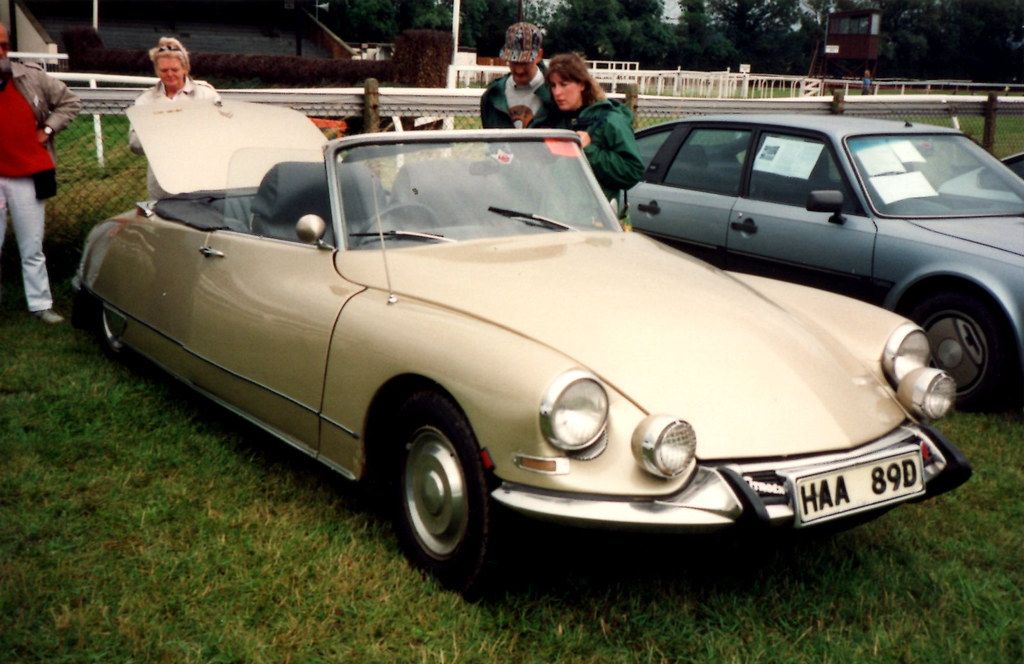
13. **1966 Citroën DS21**From France, the 1966 Citroën DS21 emerged as a true masterpiece of avant-garde design and groundbreaking engineering, standing in stark contrast to nearly all its contemporaries. Celebrated for its revolutionary hydropneumatic suspension system, which delivered an unparalleled smooth, almost magic-carpet-like ride, and its innovative power steering, the DS21 truly felt decades ahead of its time. Its futuristic appearance was a harmonious extension of a radical approach to automotive design and functionality.
The DS21’s unique hydropneumatic suspension was a game-changer, allowing the car to maintain a constant ride height regardless of load and offering an incredibly comfortable, self-leveling sensation on even the roughest roads. This innovative technology, combined with its precise power steering, set it far apart, providing a driving and riding experience that was utterly unique and deeply comfortable. It offered a level of comfort, control, and performance that few other vehicles could match.
Beyond its technological marvels, the DS21 also boasted an exceptionally aerodynamic, almost spaceship-like shape and elegant, flowing lines that made it an unmistakable standout on roads worldwide. Every curve and angle of its body was meticulously designed not just for stunning visual appeal, but also to enhance its efficiency, stability, and quietness at speed. This distinct aesthetic, often described as sculptural and visionary, solidified its status as a symbol of French ingenuity.
As a classic, the Citroën DS21 remains deeply cherished by collectors and enthusiasts who admire its groundbreaking contributions to automotive design and engineering. Its enduring legacy is a testament to its radical innovation, its timeless appeal, and its profound impact on automotive thought, continuing to captivate with its sophisticated ride and futuristic charm. The DS21 is a profound statement about what’s possible when designers and engineers are given the freedom to reimagine the automobile.
Read more about: Beyond the Auction Block: Unearthing 14 Surprisingly Affordable Classic Cars for Enthusiasts Today

14. **1969 Pontiac GTO “The Judge”**As the American muscle car era reached its flamboyant peak, the 1969 Pontiac GTO introduced an iconic variant that amplified its already legendary status: ‘The Judge’. This special edition GTO wasn’t merely about raw power; it was about unadulterated attitude, a playful yet utterly dominant statement on wheels, screaming personality from every angle. With its vibrant, eye-catching graphics and an array of high-performance options, ‘The Judge’ became an immediate symbol of unapologetic American muscle and in-your-face confidence.
What truly set ‘The Judge’ apart visually was its bold color palette, notably its Carousel Red (often referred to as orange) paint, complemented by striking side graphics, a rear spoiler, and unique “The Judge” badging. These unmistakable visual cues made it instantly recognizable and ensured it captivated enthusiasts who sought both exhilarating performance and a distinct, attention-grabbing presence. Its aggressive stance, ram-air hood scoops, and unmistakable aesthetics communicated a clear message: this car was built for excitement and to make a lasting impression.
Underneath its vibrant exterior, ‘The Judge’ packed the formidable power that GTOs were renowned for, featuring potent engine options, most famously the Ram Air III and Ram Air IV 400-cubic-inch V8s, designed to deliver thrilling acceleration and high-speed capability. Its formidable presence extended beyond its looks, solidifying its reputation as a serious contender during the peak of the muscle car era. The meticulous engineering, combined with the bold marketing and daring design philosophy, ensured it was a standout, embodying the very essence of American automotive bravado.
As a cherished classic, ‘The Judge’ continues to thrill collectors and admirers with its iconic style, potent performance, and sheer historical significance. It remains a vivid embodiment of the spirit of the late 1960s, a period when American car manufacturers pushed the boundaries of performance and design with daring flair and an unapologetic embrace of youth culture. The 1969 Pontiac GTO ‘The Judge’ is more than just a car; it’s a cultural touchstone, a celebration of an era that valued both horsepower and personality.
Car Model Information: 1966 Pontiac GTO Coupe
Name: Pontiac GTO
Caption: 2005 Pontiac GTO
Manufacturer: Pontiac (automobile),Holden
Class: Mid-size car,Compact car,Mid-size car
Production: 1963–1974,2003–2006
Predecessor: Pontiac Tempest
Layout: Front-engine, rear-wheel-drive layout
ModelYears: 1964-1974 2004-2006
Categories: 1970s cars, 2000s cars, All articles with unsourced statements, Articles with short description, Articles with unsourced statements from October 2008
Summary: The Pontiac GTO is a front-engine, rear-drive, two-door, and four-passenger automobile manufactured and marketed by the Pontiac division of General Motors over four generations from 1963 until 1974 in the United States — with a fifth generation made by GM’s Australian subsidiary, Holden, for the 2004 through 2006 model years.
The first generation of the GTO is credited with popularizing the muscle car market segment in the 1960s. Some consider the Pontiac GTO to have started the trend with all four domestic automakers offering a variety of competing models.
For the 1964 and 1965 model years, the GTO was an optional package on the intermediate-sized Pontiac LeMans. The 1964 GTO vehicle identification number (VIN) started with 22, while the 1965 GTO VIN began with 237. The GTO was designated as a separate Pontiac model from 1966 through 1971 (VIN 242…). It became an optional package again for the 1972 and 1973 intermediate LeMans. For 1974, the GTO was an optional trim package on the compact-sized Ventura.
The GTO model was revived for the 2004 through 2006 model years as a captive import for Pontiac, a left-hand drive version of the Holden Monaro, itself a coupé variant of the Holden Commodore.
Get more information about: Pontiac GTO
Buying a high-performing used car >>>
Brand: Pontiac Model: GTO
Price: $59,991 Mileage: 4,408 mi.
Read more about: Shifting Gears: Exploring Crazy ’70s Muscle Cars That Mastered High Torque and Manual Transmissions
After taking this exhilarating ride through these iconic machines, it’s clear that the 1960s was more than just a decade for automobiles; it was a revolution on wheels. From the subtle elegance of European grand tourers to the unbridled fury of American muscle cars, and from groundbreaking technological marvels to stylistic statements, each vehicle we’ve explored is a testament to an era when design, engineering, and cultural impact converged to create automotive legends. These cars weren’t just about getting from point A to point B; they were about passion, innovation, and a distinct character that truly defined the spirit of the times. Their timeless appeal continues to captivate enthusiasts, ensuring their place in history as enduring symbols of a golden age for the automobile.



